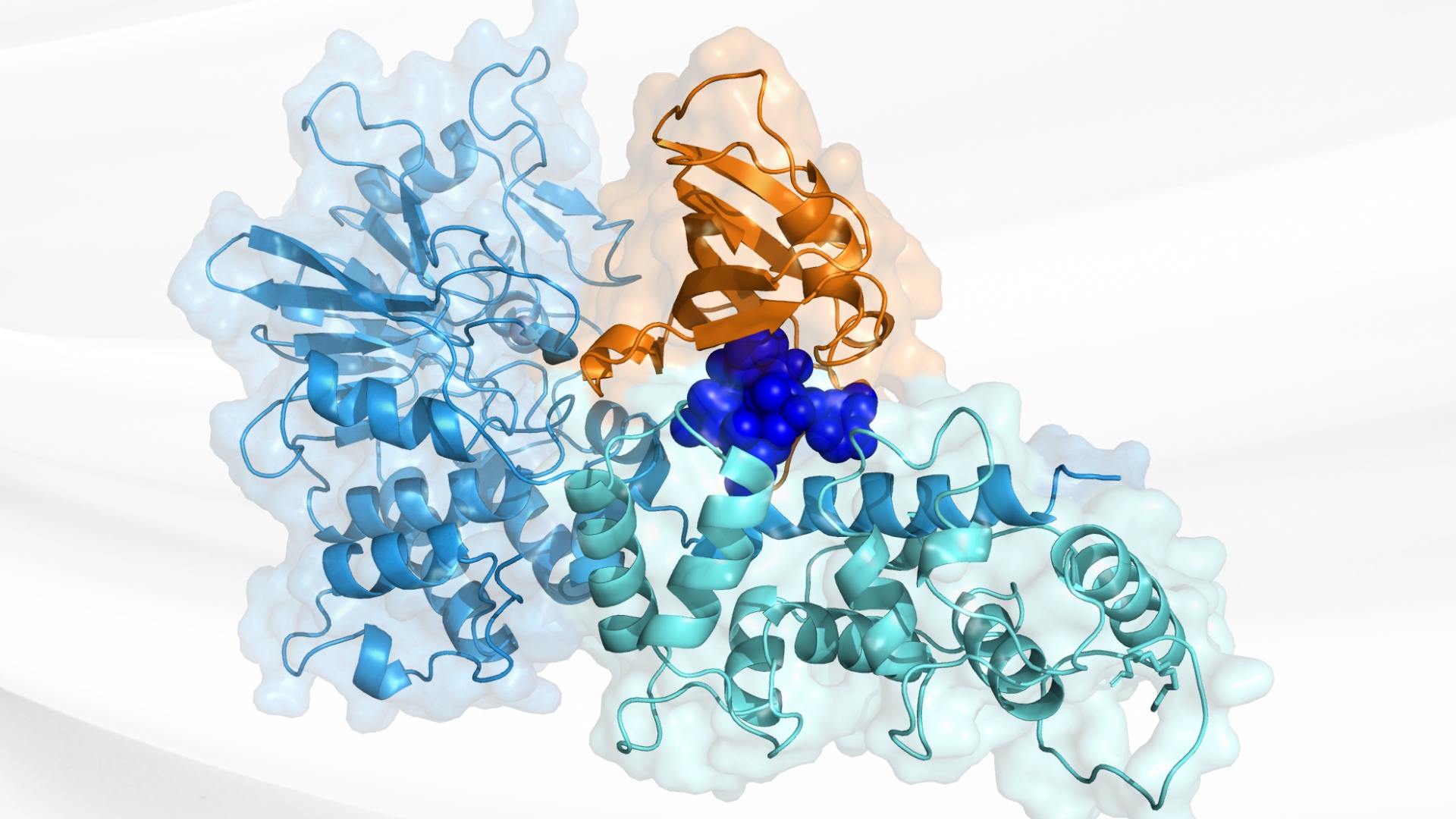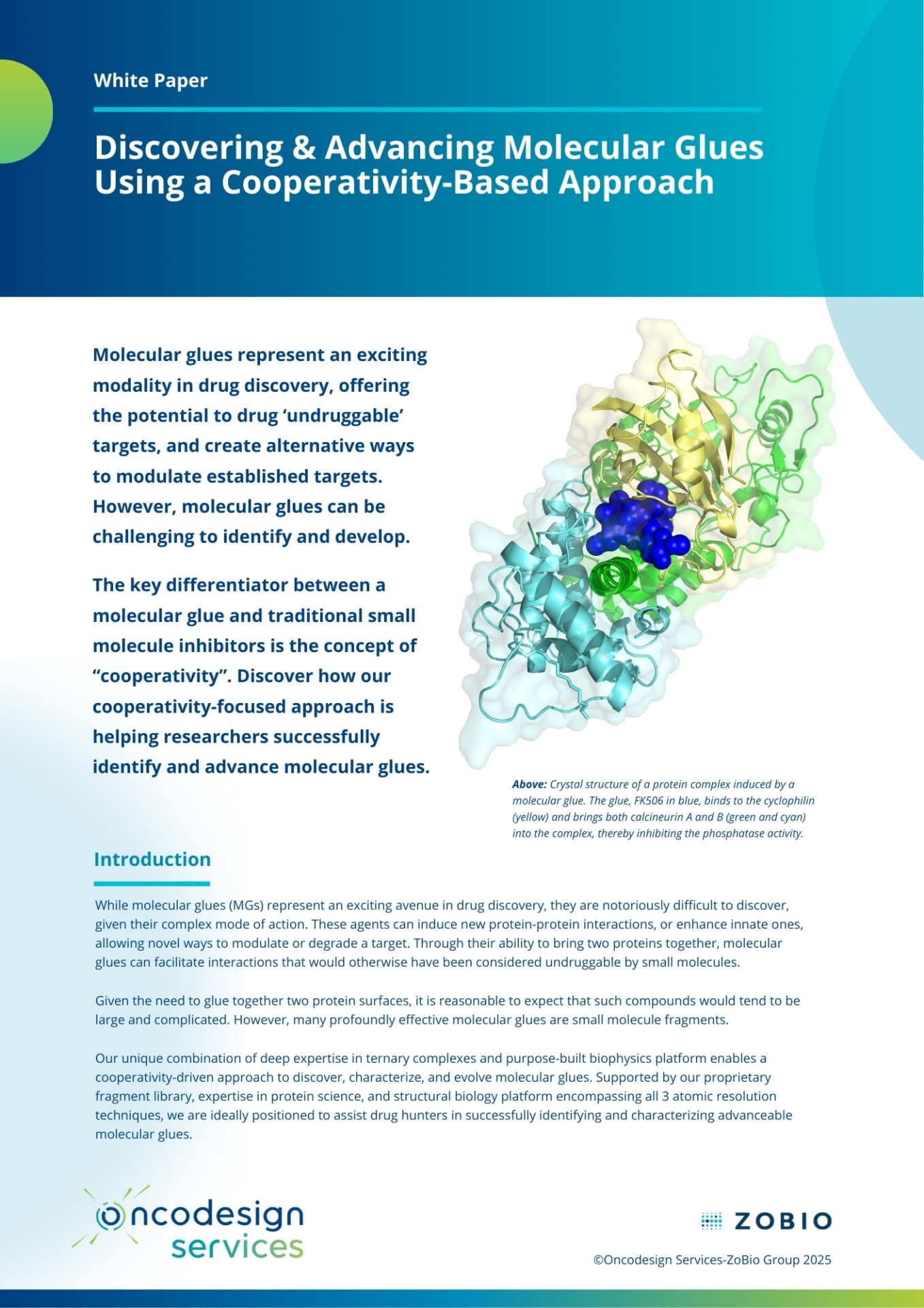


Precision Discovery and Structure-Guided Development of Molecular Glues
Molecular glues represent a groundbreaking approach in drug discovery, offering the unique ability to modulate or degrade traditionally “undruggable” targets by promoting or stabilizing protein-protein interactions. Unlike conventional small molecule inhibitors, molecular glues form ternary complexes involving two proteins and a small molecule, with their effectiveness largely driven by cooperativity—the synergistic enhancement of binding affinity through protein interaction.
Despite their therapeutic promise, molecular glues are notoriously difficult to identify due to their complex and often subtle mechanisms of action. Traditional discovery approaches often overlook promising candidates with weak initial binding affinity but high cooperativity, that latter of which is a key characteristic of effective molecular glues.
This white paper introduces a cooperativity-focused strategy for discovering and advancing molecular glues. By leveraging a proprietary biophysics platform, specialized fragment library, and deep expertise in protein science and structural biology, the approach enables direct detection of ternary complex formation.
The discovery workflow includes surface plasmon resonance (SPR)-based screening, cooperativity measurement, de-risking, and kinetic profiling. Structural insights are generated using X-ray crystallography, NMR, and Cryo-EM to support rational, structure-guided optimization.
Combined with built-in risk management tools and collaborative project design, this platform empowers drug developers to unlock the full potential of molecular glues with greater confidence, precision, and speed.
If you are interested in how cooperativity-driven molecular glue discovery could support your drug discovery goals, please reach out to us and request an exploratory conversation.

The ZoBio team in Leiden, Netherlands, joined the Oncodesign Services group in early 2024, adding their extensive expertise and experience in tactical early discovery approaches to our existing late discovery and preclinical portfolio.


